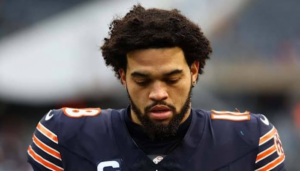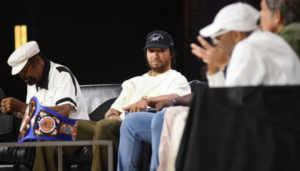Betting has evolved from a simple act of wagering on outcomes to a data-driven ecosystem grounded in probability and mathematical modeling. At the heart of every bet lies one essential element — odds. They represent the likelihood of an event occurring and determine potential returns. Understanding betting odds, therefore, is less about luck and more about interpreting numerical indicators of probability.
The core of modern wagering lies in transparency and analysis. Odds are no longer static figures assigned by bookmakers but dynamic reflections of data streams, public sentiment, and market adjustments. Whether in sports, esports, or off-track racing, the concept of odds helps participants interpret risk and expectation.
Mozzartbet Review: A Case Study in Odds Presentation
Among global betting operators, digital platforms have become critical in shaping how users interpret and interact with betting data. A notable example can be observed through the mozzartbet app, which illustrates the modernization of odds presentation and accessibility.
The app employs a clear and functional interface for displaying different odds formats — including decimal, fractional, and American — allowing users to interpret probability more intuitively. This design choice reflects a broader industry trend toward data visualization and user-centric analytics rather than promotional content.
| Odds Format | Example | Implied Probability | Calculation |
| Decimal | 2.50 | 40% | 1 ÷ 2.50 = 0.40 |
| Fractional | 3/1 | 25% | 1 ÷ (3 + 1) = 0.25 |
| American (+200) | 200 | 33.3% | 100 ÷ (200 + 100) = 0.333 |
What this case illustrates is how platforms such as Mozzartbet integrate mathematical transparency with technology. By presenting real-time fluctuations in odds, these platforms enable users to see how betting markets react to ongoing developments in a sporting event.
How to Understand Betting Odds: The Foundation of Smart Wagering
Odds are the numerical representation of probability, serving as the backbone of any wagering system. The higher the odds, the lower the probability of an event, and vice versa. For instance, a decimal odd of 2.00 suggests a 50% chance, while an odd of 4.00 reflects a 25% likelihood.
Understanding odds requires interpreting both their mathematical and behavioral aspects. In practical terms, odds can shift due to market sentiment — for example, when large groups place bets on the same outcome, causing the bookmaker to adjust probabilities accordingly. This process ensures balance and protects against financial exposure.
The most fundamental distinction lies between implied probability and actual probability. Bookmakers include a small margin (known as the “vig” or “juice”) to ensure profitability. Therefore, the total implied probability across all possible outcomes often exceeds 100%.
Odds Explained: The Math Behind Betting Markets
To comprehend how odds are structured, it is essential to analyze their mathematical underpinnings.
- Implied Probability Formula:
Implied Probability = 1 / Decimal Odds - Example Calculation:
For odds of 2.50 → 1 / 2.50 = 0.40 → 40% implied probability
Bookmakers use this calculation to estimate how likely an outcome is, then apply adjustments based on external factors such as team performance, player injuries, or public betting patterns.
| Decimal Odds | Implied Probability (%) |
| 1.50 | 66.7% |
| 2.00 | 50% |
| 3.00 | 33.3% |
| 5.00 | 20% |
These probabilities are not static. In dynamic markets, algorithms continuously update odds in real time, ensuring that they reflect the most recent data inputs and risk assessments.
Odds on Off-Track Betting: A Different Perspective
Off-track betting (OTB) represents a distinct model within the broader wagering ecosystem. Unlike fixed-odds sports betting, OTB operates on a pari-mutuel system, where all bets of a particular type are pooled together. After deducting commissions and taxes, the pool is divided among the winners.
This model means that the final odds are not known until betting closes, creating a more fluid, collective approach to wagering. The following example illustrates the calculation:
| Variable | Description |
| Total Betting Pool | $10,000 |
| Commission | 10% |
| Remaining Pool | $9,000 |
| Amount Bet on Winning Horse | $2,000 |
| Final Odds | ($9,000 ÷ $2,000) = 4.5 or 7/2 |
In this context, the odds reflect collective betting behavior rather than pre-determined probabilities. As a result, OTB can be viewed as a community-driven estimation of event outcomes rather than an algorithmic forecast.
The Role of Data Analytics in Setting Odds
Modern bookmakers increasingly rely on data analytics and artificial intelligence to calculate and adjust odds. Predictive algorithms evaluate thousands of data points — including player statistics, team form, weather, and even social media sentiment — to fine-tune probabilities in real time.
AI-based modeling also contributes to dynamic line movement, ensuring that markets stay balanced regardless of betting volume. These systems constantly learn from past data, optimizing for both accuracy and risk mitigation.
Statistical models such as Poisson distribution, Bayesian networks, and Monte Carlo simulations are commonly used in determining outcome probabilities.
Interpreting Odds: From Numbers to Informed Understanding
For bettors, understanding odds is an analytical process rather than speculation. It involves interpreting numerical data within the context of performance metrics and historical results. By comparing expected value (EV) across different odds, participants can assess whether a wager offers statistical value.
Example:
If the true probability of an event is 55%, but odds are offered at 2.10 (47.6% implied probability), the wager presents a positive expected value. This type of analysis forms the foundation of data-driven betting strategies.
How to Explain Betting Odds to Beginners
Betting odds can be simplified into three major formats: decimal, fractional, and American. Each expresses the same information differently, yet all derive from the same principle — the mathematical expression of probability.
Beginners often find decimal odds easiest to understand, as they clearly show potential returns. Fractional odds remain common in regions with historical betting traditions, while American odds dominate U.S.-based markets.
To bridge the understanding gap, some platforms now include built-in calculators or visualization tools to demonstrate real-time implied probability shifts. This technological transparency plays a growing role in fostering a more informed wagering environment.
The Broader Context of Betting Systems
The concept of odds extends beyond individual wagers. It influences entire betting ecosystems — from sportsbook algorithms to exchange-based peer-to-peer platforms. Furthermore, regulatory developments increasingly demand that operators disclose how odds are calculated, reinforcing accountability and consumer trust.
The mathematical integrity of odds ensures that betting, when properly structured, remains a reflection of statistical likelihood rather than arbitrary speculation.
Conclusion: Betting Odds as the Mathematics of Uncertainty
Understanding betting odds means grasping the balance between chance, mathematics, and behavioral economics. While each odd reflects a calculated estimate of probability, it also embodies market psychology and risk distribution.
In a digital age driven by data analytics and algorithmic forecasting, odds represent more than just numbers — they are the evolving language of probability, reflecting both human intuition and machine-driven precision.










